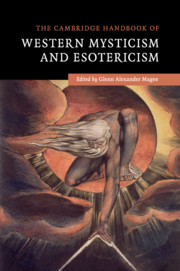Book contents
- Frontmatter
- Dedication
- Contents
- Acknowledgments
- Editor's Introduction
- List of contributors
- I ANTIQUITY
- II THE MIDDLE AGES
- III THE RENAISSANCE AND EARLY MODERNITY
- IV THE NINETEENTH CENTURY AND BEYOND
- V COMMON THREADS
- 30 Alchemy
- 31 Astrology
- 32 Gnosis
- 33 Magic
- 34 Mathematical Esotericism
- 35 Panpsychism
- 36 Sexuality
- Suggestions for Further Reading
- Index
- References
36 - Sexuality
from V - COMMON THREADS
Published online by Cambridge University Press: 05 May 2016
- Frontmatter
- Dedication
- Contents
- Acknowledgments
- Editor's Introduction
- List of contributors
- I ANTIQUITY
- II THE MIDDLE AGES
- III THE RENAISSANCE AND EARLY MODERNITY
- IV THE NINETEENTH CENTURY AND BEYOND
- V COMMON THREADS
- 30 Alchemy
- 31 Astrology
- 32 Gnosis
- 33 Magic
- 34 Mathematical Esotericism
- 35 Panpsychism
- 36 Sexuality
- Suggestions for Further Reading
- Index
- References
Summary
Introduction
Sexuality has long held a central place of both symbolic and practical significance in the history of Western esotericism. Indeed, male-female sexual differentiation and the act of sexual union are among the most pervasive, recurring, and multivalent themes running through esoteric traditions from early Gnosticism and Hermeticism down to contemporary occult and magical groups.
The reasons for this frequent association between sexuality and esotericism are not far to seek. If esotericism refers literally to what is hidden, or known only to an intimate few, then sexuality is not surprisingly one of its most common metaphors. Indeed, we might say that, “in some real sense, sex is the secret par excellence.” And if esotericism involves a complex dialectic of concealment and revelation of secret knowledge, then it finds a close analogue in eroticism, which also involves a subtle dialectic of concealing and revealing. As Elliot Wolfson observes in his study of sexual imagery in Kabbalah, “eroticism and esotericism converge at the point of divergence … eroticism ostensibly exposes the concealed and esotericism conceals the exposed.”
Similarly, the union of male and female bodies in sexual intercourse is also a common metaphor (and at times a physical vehicle) for the ideal of divine union, for intercourse between the physical and spiritual realms, and for a state of divine androgyny. If sex (from Latin sexus) is literally what “divides” or “separates” male from female bodies, then the act of sexual union can serve as a powerful symbol, or even ritual technique, for the experience of spiritual reintegration. Finally, because esoteric traditions are by definition largely secret, surrounded by layers of concealment and obfuscation, they have also been frequent targets for charges of sexual licentiousness, obscene perversion, and all manner of transgressive rites. Indeed, from the early gnostics down to the medieval heresies, Freemasons, and contemporary occult movements, one of the most frequent (and often fantastic) charges leveled at esoteric traditions is that they are involved in some form of perverse, demonic, or sacrilegious sexual activity.
- Type
- Chapter
- Information
- The Cambridge Handbook of Western Mysticism and Esotericism , pp. 429 - 440Publisher: Cambridge University PressPrint publication year: 2016

